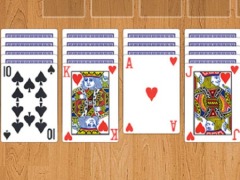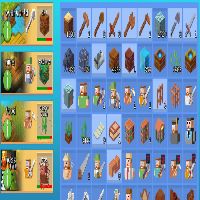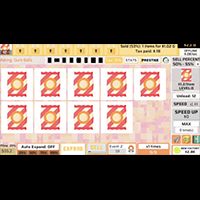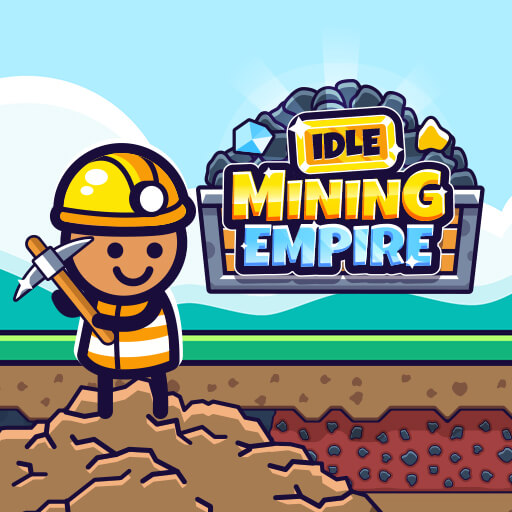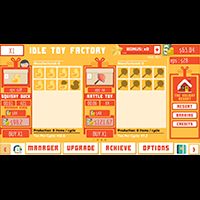2048
SIMILAR GAMES
Description
2048 - Classroom 6X
About 2048 - Classroom 6X
We find ourselves immersed in a world where the convergence of simplicity and profound challenge defines the quintessential puzzle game. 2048, with its elegant design and deceptively complex gameplay, has captivated players across the globe. The game's allure stems from its ability to provide both immediate satisfaction and a persistent pursuit of mastery. At its core, 2048 presents a mathematical and strategic experience that is both accessible and deeply engaging. This article delves into the intricacies of 2048, exploring its mechanics, strategic depth, and the reasons behind its enduring popularity, particularly within settings like those facilitated by Classroom 6X, a platform designed for educational and recreational engagement.
Understanding the Core Mechanics of 2048
The fundamental premise of 2048 is remarkably straightforward, yet it houses an intricate web of strategic possibilities. The game unfolds on a 4x4 grid, a confined space where the player's objective is to merge tiles bearing numerical values. Initially, the grid is populated with the numbers 2 and 4. The player's primary action is to swipe in one of four directions: up, down, left, or right. This action causes all tiles on the grid to slide in the chosen direction until they encounter an obstacle, either the edge of the grid or another tile. If two tiles of identical value collide while moving, they merge into a single tile, the value of which is the sum of the two original tiles. This is the core mechanic that drives the game forward, and its understanding is fundamental to any successful strategy.
Key elements that contribute to gameplay include:
- Tile Movement and Merging: Tiles slide and merge according to the swipe direction, doubling their value upon collision.
- New Tile Generation: After each successful swipe, a new tile (either 2 or 4) appears in a vacant space on the grid, adding a layer of unpredictability.
- Game Over Conditions: The game concludes when the grid is full, and no further moves are possible. This forces the player to strategically manage space and plan ahead.
The goal is to create a tile with the value of 2048, by merging tiles sequentially, starting with the initial "2" and "4" tiles. However, the game doesn’t end after reaching 2048. The player can continue to merge tiles beyond this point, striving for higher scores and greater achievements.
Strategic Depth: Mastering the Art of 2048
While the rules of 2048 are easy to grasp, achieving success demands strategic foresight and careful planning. The apparent simplicity masks a considerable amount of depth, requiring players to think several moves ahead. Several strategic considerations are key:
Maximizing Space and Minimizing Blockage
One of the primary objectives in 2048 is to efficiently use space. Players should strive to avoid scattering tiles across the grid in a way that creates blockages or prevents merges. Keeping the higher-value tiles concentrated in one corner or along an edge is a commonly adopted strategy. This approach offers significant advantages in preventing the grid from filling up too quickly and provides greater flexibility for future moves.
Prioritizing Tile Placement and Predicting Outcomes
Anticipating the consequences of each swipe is crucial. Players must consider how each move will impact the grid and the opportunities or constraints it creates. For example, merging tiles in a way that leaves no adjacent tiles of the same value can be detrimental. This skill develops with practice, but it is a vital part of improving gameplay. The player must predict the outcome of each move and think about its impact on the future possibilities.
Optimizing Merge Sequences
Players must learn how to execute the optimal sequences. Not every merge opportunity should be taken immediately. It is often beneficial to delay a merge to set up a more valuable combination in the future. This strategic thinking is essential for achieving high scores. A strategic approach to merging tiles allows for the creation of higher values, leading to a quicker progression toward the 2048 tile and beyond.
Avoiding Early Errors
New players often make the mistake of creating a chaotic grid by not considering the outcome of each swipe. Early mistakes are hard to fix. Understanding common pitfalls, such as trapping high-value tiles or allowing low-value tiles to spread across the board, is essential.
The Role of 2048 in Educational Settings
The strategic depth inherent in 2048 provides valuable lessons applicable to various subjects and settings. The game is available on multiple platforms, including those used in classrooms. The game's focus on logical reasoning, spatial awareness, and problem-solving skills makes it an excellent tool for stimulating cognitive development.
Promoting Mathematical Thinking
At its heart, 2048 involves basic mathematical concepts, like addition and exponential growth. This makes the game ideal for reinforcing these concepts in a practical, engaging manner. Students can visualize the way that addition produces new numbers and how these numbers progressively build toward larger values. It serves as a fun introduction to exponential concepts without the formality of textbook exercises.
Enhancing Problem-Solving Skills
Each game of 2048 presents a series of challenges that require players to devise and implement effective strategies. By analyzing the grid, anticipating the outcome of each move, and adapting to new tile placements, players develop critical problem-solving skills. This capacity to adapt and strategize can benefit students across multiple academic areas.
Fostering Spatial Reasoning
The 4x4 grid of 2048 fosters a sense of spatial reasoning, challenging players to visualize how tiles move and merge across a confined space. This skill is fundamental in mathematics, engineering, and other subjects. Players must understand how the spatial arrangement of tiles influences their strategic options.
Engaging with the game via Classroom 6X
Platforms like Classroom 6X offer an interface that may enhance learning potential. By facilitating access and providing opportunities for collaborative play and competition, educational platforms can make the most of the game's educational benefits. These settings promote interaction and create a sense of community among students.
2048 and Its Impact on the Gaming Landscape
The simplicity of the game design, combined with its inherent strategic depth, has propelled 2048 to international prominence. While it appears basic, its core mechanics are compelling and the high scores are challenging. Its accessibility has enabled it to reach a large audience, which has led to numerous adaptations and variations.
Popularity and Accessibility
The game is available on multiple platforms, including web browsers, mobile devices, and other devices. The minimal user interface is easy to learn and play. The game's popularity is a testament to its intuitive design and the pleasure it provides.
Variations and Adaptations
2048 has inspired numerous spin-offs and variations, some of which introduce new grid sizes, scoring systems, or thematic elements. These adaptations show the game's adaptability and influence. These spin-offs maintain the core gameplay while providing new challenges and experiences. These variations highlight how basic the design is, and it also offers options for the players.
Cultural Significance
2048 has become a cultural phenomenon. Its simplicity, combined with its challenging gameplay, has made it a source of entertainment for players of all ages. The game's viral spread across different platforms demonstrates the power of its appeal.
Tips and Strategies for Playing 2048
Improving your performance in 2048 requires developing strategic thinking and mastering certain techniques. Below are some useful tips that players can utilize to enhance their scores and enhance their gaming experience.
Corner Strategy
A classic strategy in 2048 is to keep the largest tile in one corner of the grid. This approach reduces the number of moves and keeps high-value tiles from moving around. The corner becomes an anchor. Players should swipe tiles toward the corner. The corner can be any corner of the grid.
Maintaining a Linear Progression
Players should aim to create a linear order of tiles, such as organizing tiles by value in an ascending or descending sequence, along one side of the grid. This arrangement makes merges easier and minimizes the likelihood of grid blockage. The goal of this strategy is to avoid having smaller tiles in between the tiles with larger values.
Anticipating Moves and Planning Ahead
Players should try to anticipate the outcome of each swipe. By analyzing the grid and predicting the consequences of each move, players can avoid mistakes and make strategic decisions. Considering where new tiles will appear and their impact on existing arrangements will increase the success rate.
Avoiding Early Merges
Players should avoid merging tiles unnecessarily. Sometimes, it's better to wait for a merge opportunity that helps maintain your strategic goals. Merging without planning can reduce opportunities and create problems in the future. It's important to remain patient, and to plan each move to maximize opportunities.
Practicing and Learning from Mistakes
Players should practice and analyze their games to learn from mistakes. Studying grid arrangements that lead to success and failure will improve strategic intuition. Playing the game again helps reinforce the strategies and helps develop skills. Continuous learning is important for any player looking to improve.
The Future of 2048 and Puzzle Games
The continued popularity of 2048 hints at an enduring appeal for puzzle games. The future is marked by innovation in game design, the rise of new platforms, and the development of games that are able to engage players from all over the world. The enduring appeal of games like 2048 suggests continued growth in the gaming landscape.
Innovation in Game Design
Game developers continue to experiment with new mechanics and game ideas that redefine the player experience. These innovations can include new interface designs, dynamic difficulty levels, and more advanced strategic puzzles. New approaches can provide greater challenges and more engagement for players.
Emergence of New Platforms and Technologies
The rise of new platforms such as virtual reality (VR) and augmented reality (AR) offers unique possibilities. These technologies can make interactive games such as 2048 more immersive, and enhance players' engagement. These new platforms can open new opportunities.
The Importance of Community and Collaboration
The gaming community plays a vital role in the popularity and evolution of games. Players interact in forums, share strategies, and create community-driven events. The collaborative aspect of gaming helps to maintain interest and expand the games' reach. The gaming community is essential for new players to learn and to experience the game.
Conclusion
2048 stands as a testament to the ability of simple game mechanics to create a captivating and intellectually stimulating experience. Its accessible design makes it easy to pick up, while its strategic depth challenges players to develop and refine their decision-making skills. Whether played for recreational enjoyment or utilized within educational settings, 2048 offers a unique blend of entertainment and cognitive stimulation. Its continued popularity, alongside the emergence of platforms like Classroom 6X that foster engagement in educational environments, underscores the enduring value of well-designed, intellectually engaging games. By understanding the game’s mechanics, adopting effective strategies, and appreciating its cultural significance, players can fully enjoy the many benefits of this remarkable puzzle.
2048 invites players into a subtly complex puzzle where mathematics meets strategic maneuvering in a confined space. At its core, the game’s premise is seemingly straightforward: swipe to move and merge tiles of equal values, exponentially doubling them towards the target of a 2048 tile. Yet, beneath its minimalist interface lies a rigorous test of planning and foresight. Each swipe fills the 4×4 grid slightly, introducing new “2” or “4” tiles.
Strategic Harmony in Numbers
The essence of 2048’s challenge blooms in managing the numeric landscape. Players must cultivate a tactical harmony where each move is part of a broader strategy. The goal is to avoid isolating high-value tiles which could block potential merges. Advanced players often adopt a corner strategy, anchoring their highest value tile in a fixed position to build around. This methodical approach turns each session into a cerebral dance, where every slide, every merge, and every new tile plays into a grander scheme of spatial economy and numeric potential.
2048’s allure springs from its blend of simplicity and cognitive engagement. It doesn’t just challenge players to hit a numeric target but encourages the development of a nuanced strategy to navigate its tight, evolving board. Each game is a fresh mental workout, a puzzle that’s as addictive as it is rewarding, drawing players back to surpass their personal bests and redefine their strategic limits. This game transforms a simple grid and a series of numbers into an arena of infinite possibilities and mind-bending puzzles, proving that true challenge often comes in the most unassuming forms.








